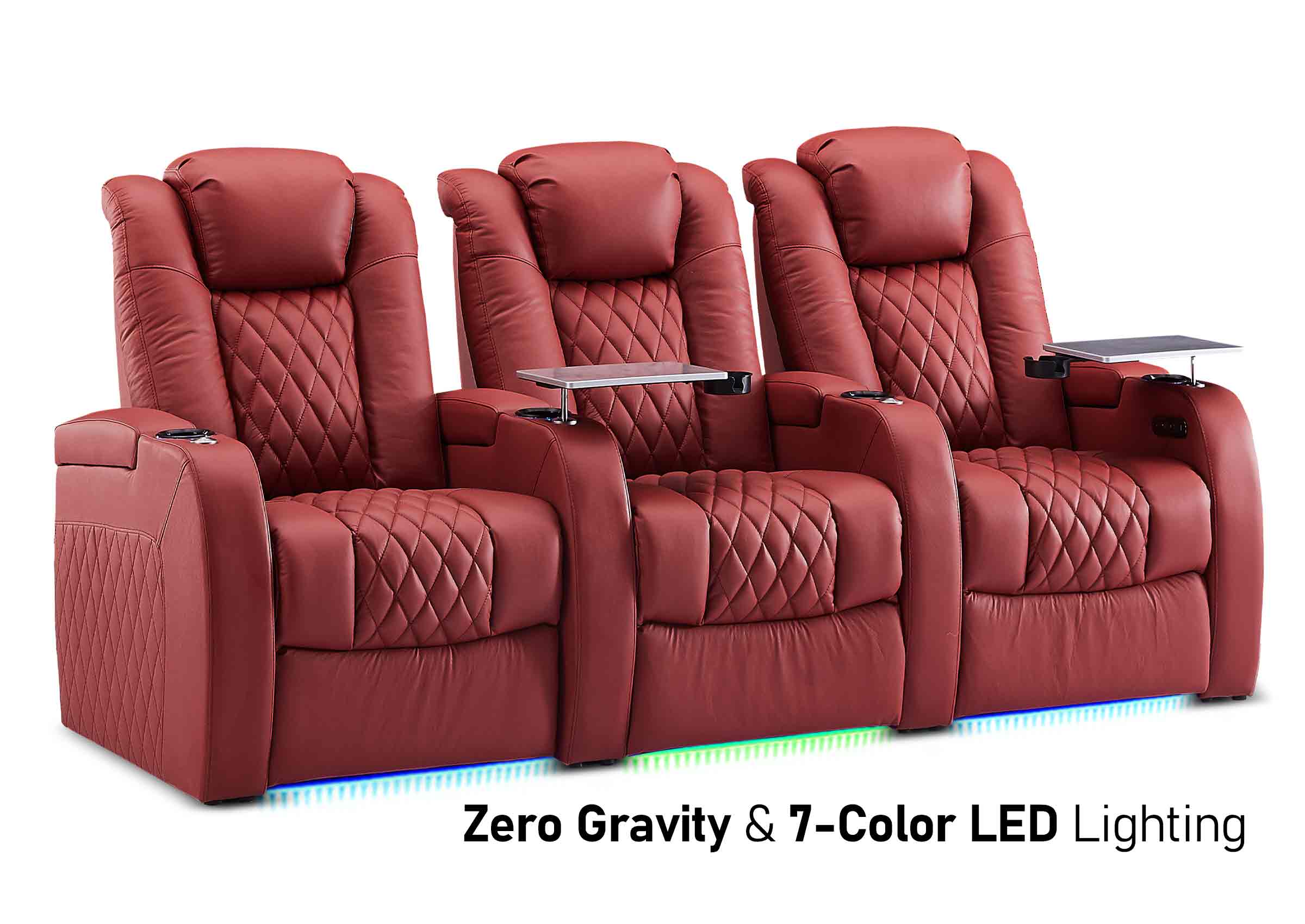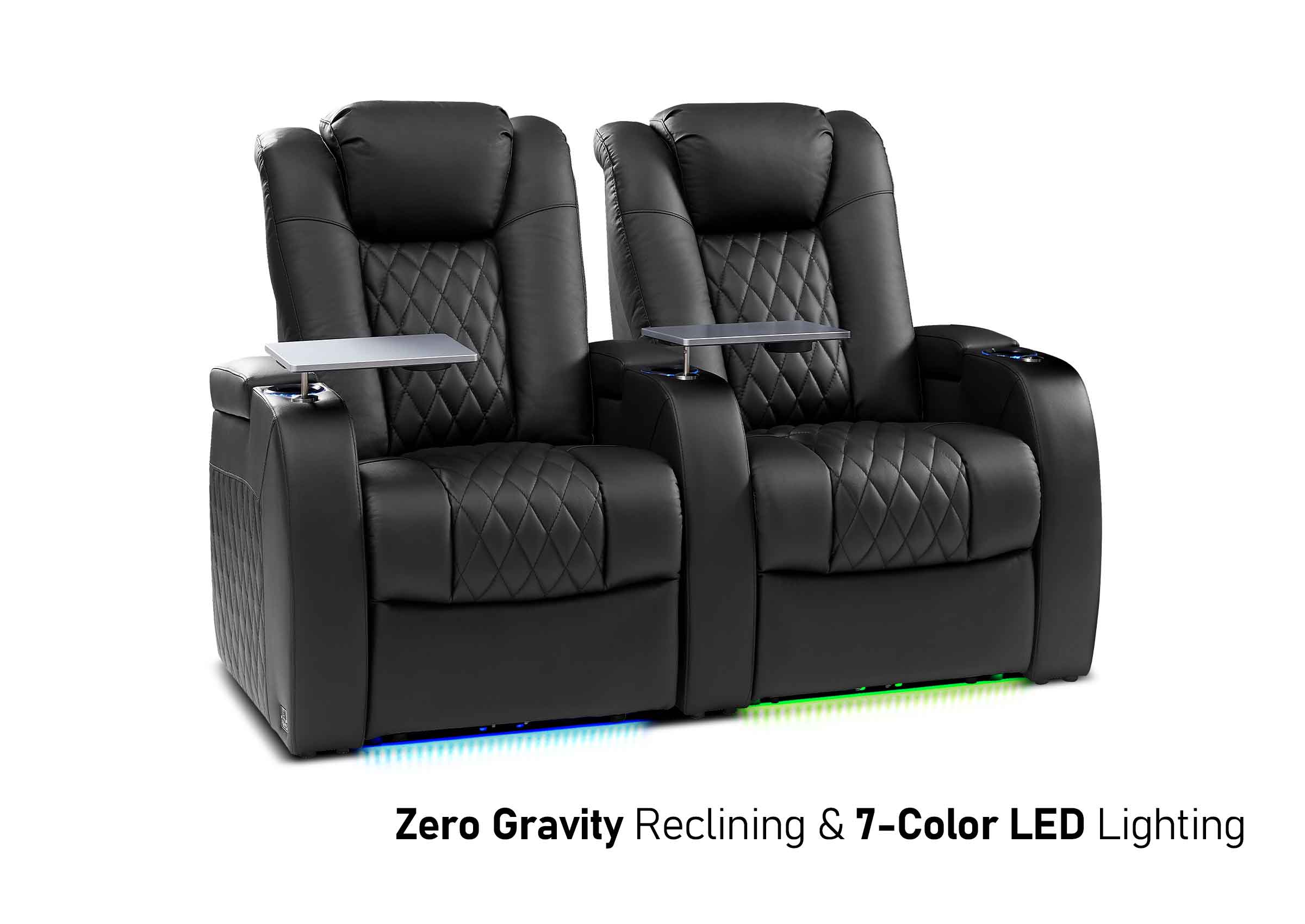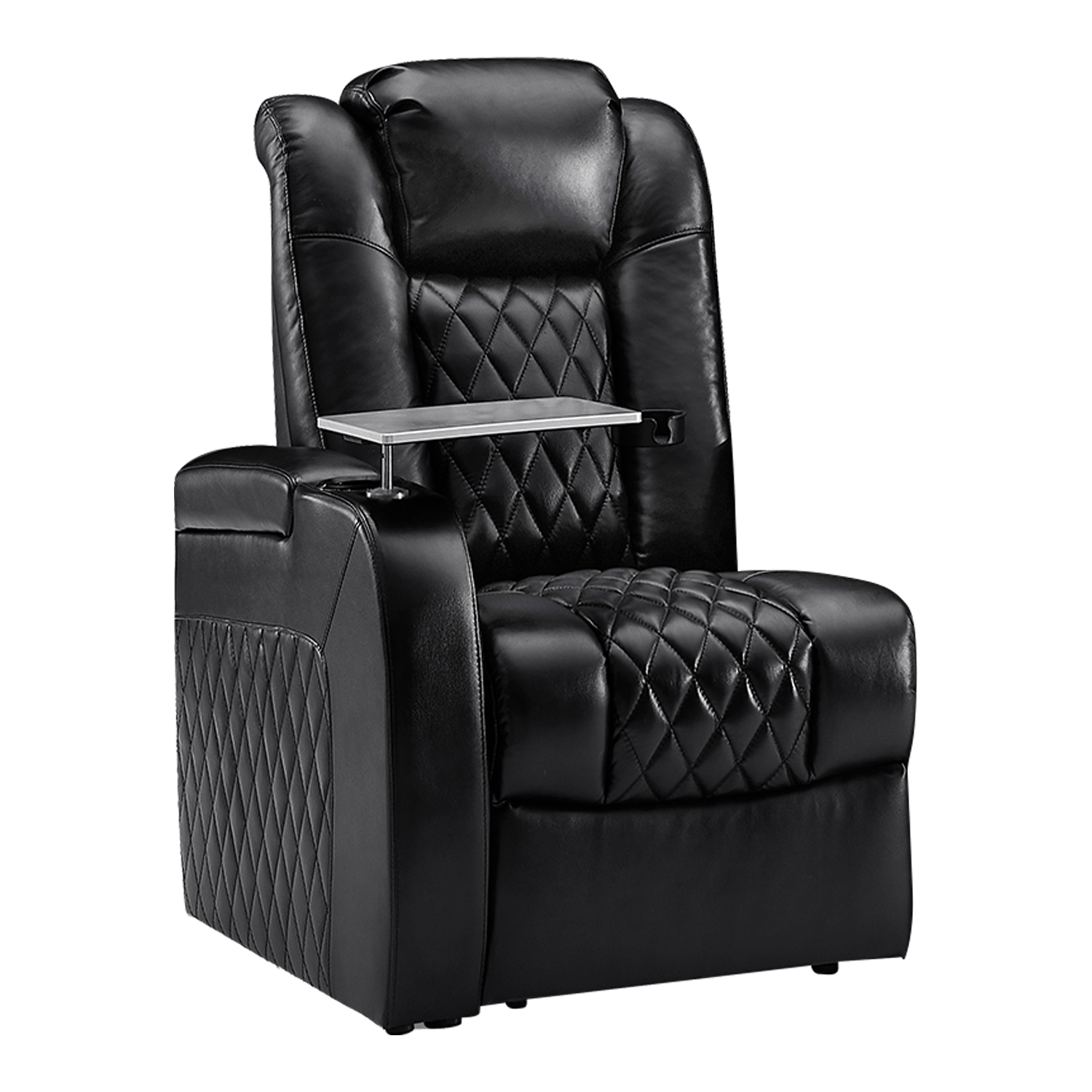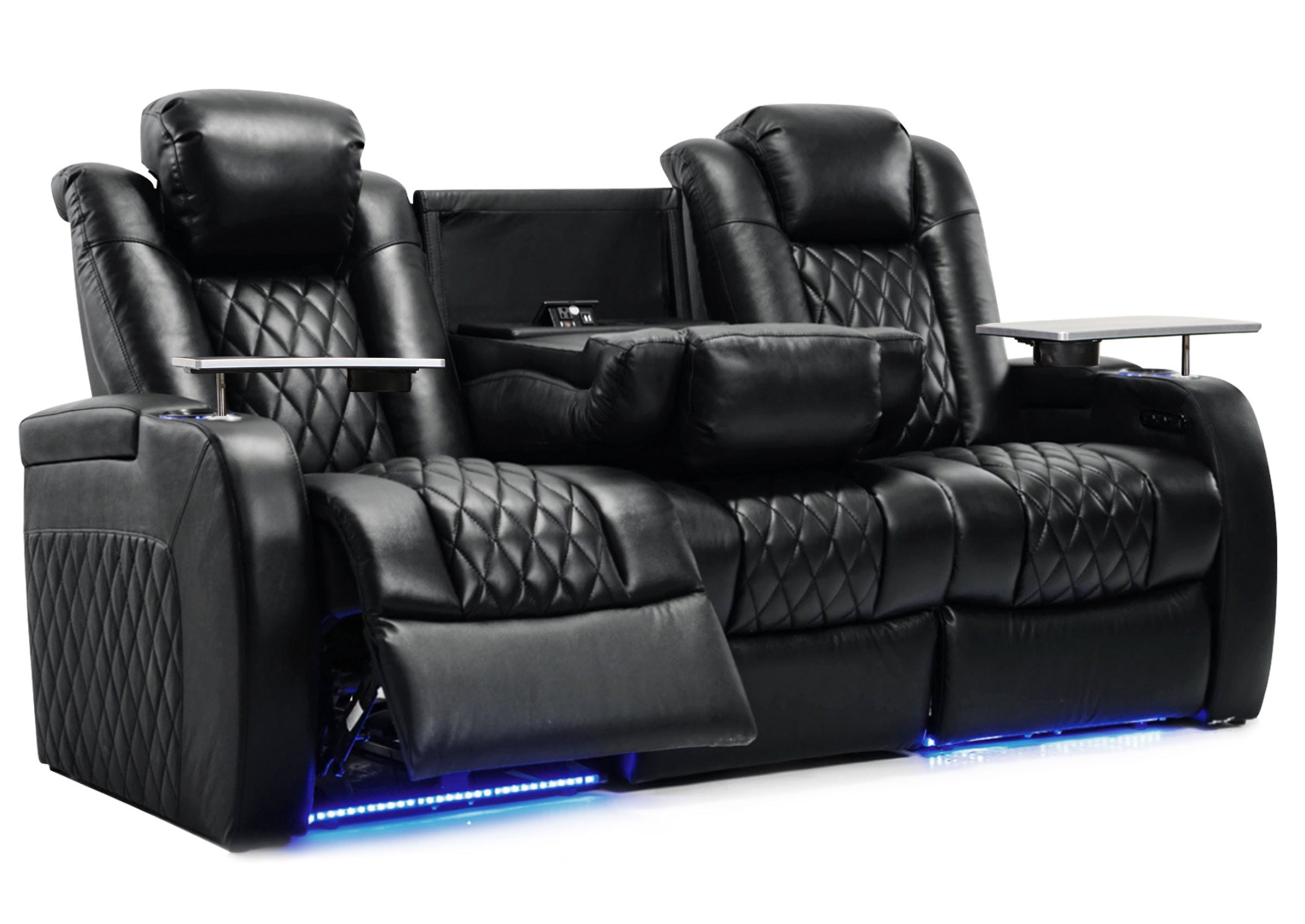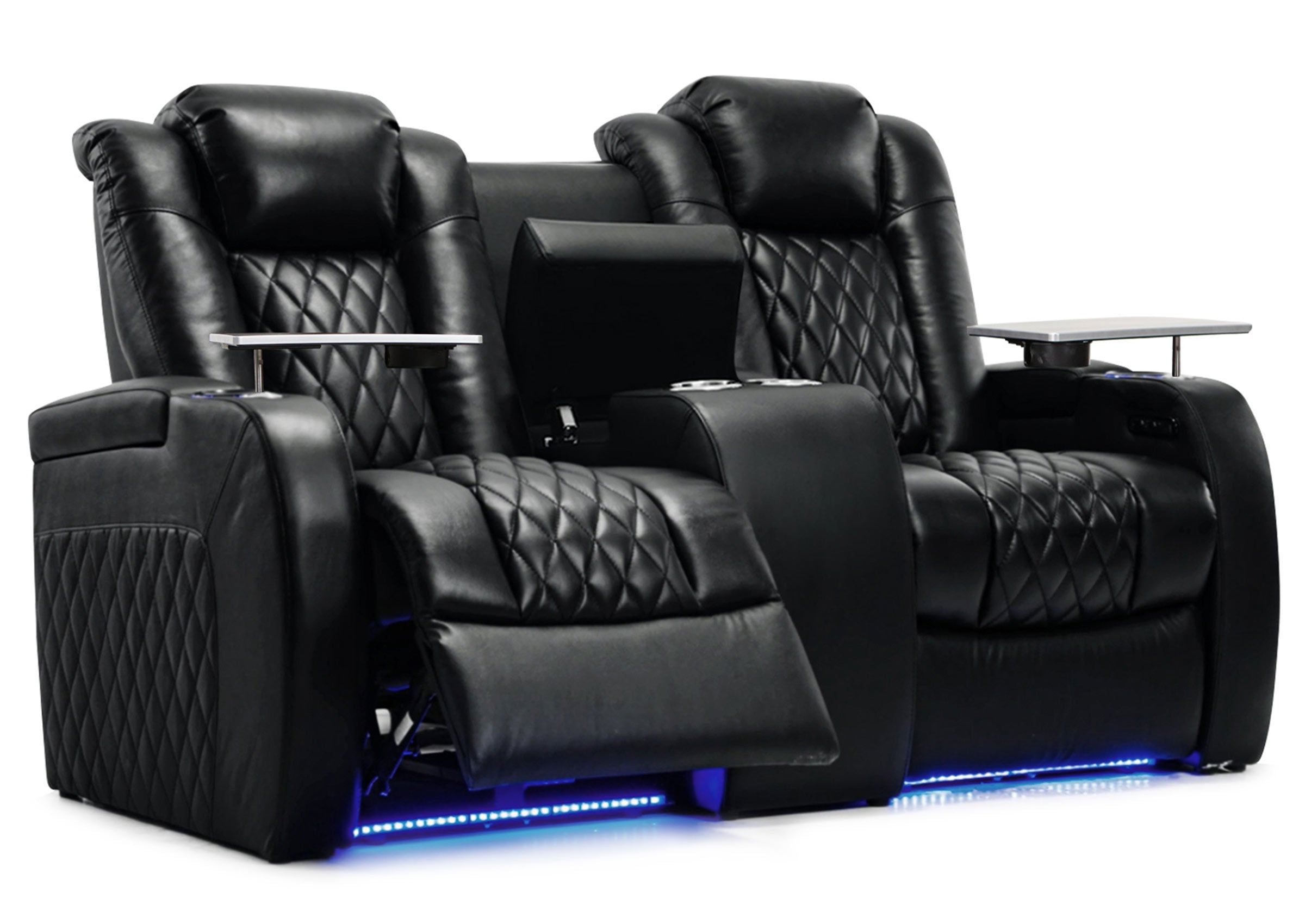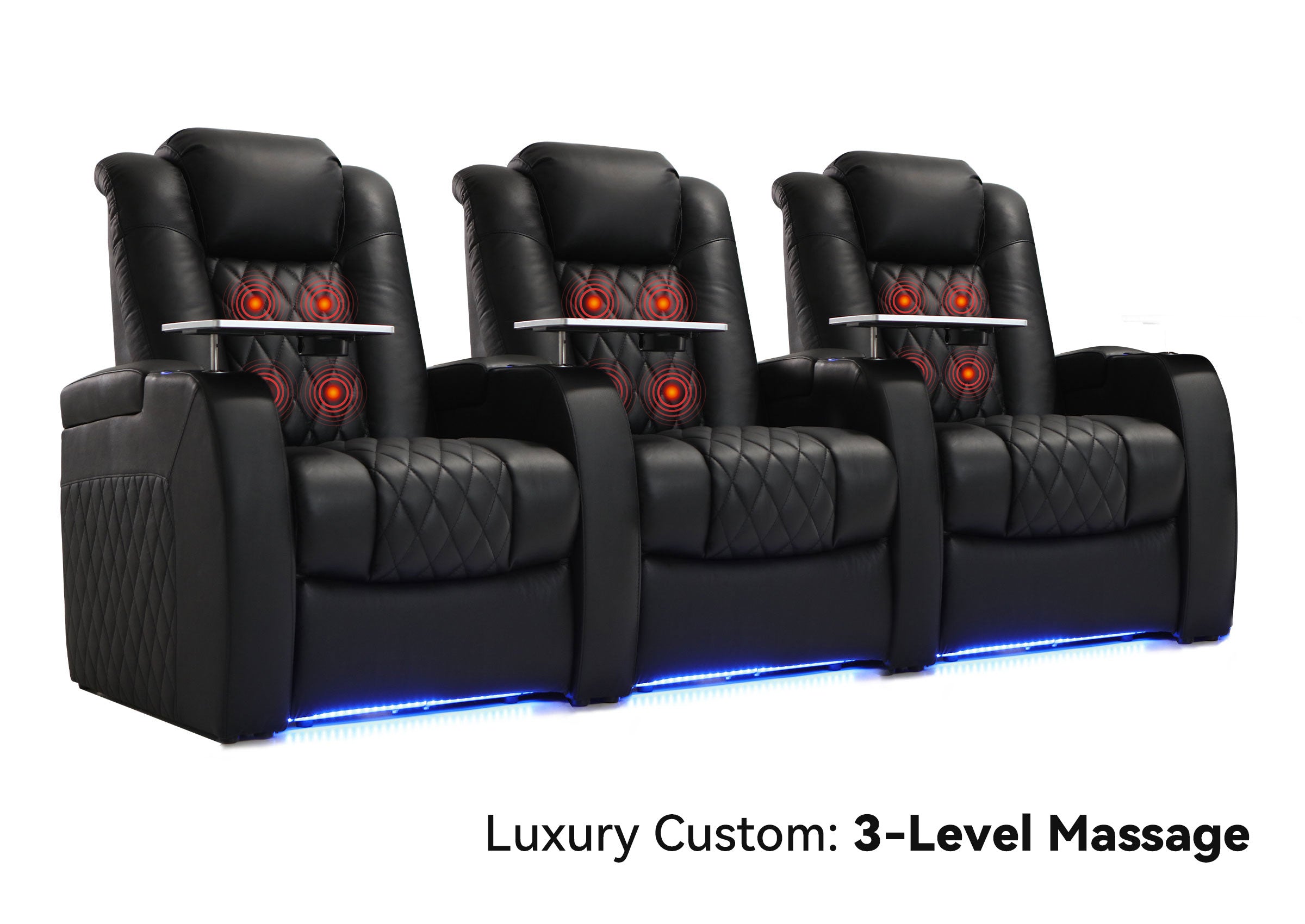When setting up a home theater, choosing the right seating is crucial for an immersive and comfortable viewing experience. However, numerous myths and misconceptions surround this essential aspect, often leading to compromised comfort and enjoyment. This blog aims to separate fact from fiction, empowering you to make informed decisions that prioritize both luxury and ergonomics.
Myth 1: Any Seat Is Good Enough for a Home Theater
When setting up your home theater, it’s important to understand that not all chairs are created equal. A common misconception is that any chair will do, but this couldn’t be further from the truth. Truly comfortable and supportive home theater chairs are designed with ergonomics in mind. This means that they are carefully engineered to follow the natural curves of your spine. For example:
- Optimal lumbar support fills the inward curves in your lower back, preventing hunching and reducing pressure. An adjustable headrest supports the natural curvature of your neck, minimizing neck pain during long viewing sessions.
- The overall contours of an ergonomic chair are designed to evenly distribute your weight, reducing pressure points that can cause discomfort.
- Choosing a chair that doesn’t follow these ergonomic principles can lead to discomfort, fatigue, and even long-term health issues.
Myth 2: More Cushioning Equals More Comfort
Another common myth is that more cushioning equates to more comfort. While plush, soft cushioning may seem inviting at first, it can actually lead to discomfort over prolonged periods. The key to sustained comfort throughout an entire movie or binge-watching session is proper support. Overly soft seating can cause your body to sink in, which can compromise your spinal alignment and potentially lead to aches and pains. Furthermore, sinking into excessively cushioned seats can restrict blood flow, resulting in unpleasant sensations like numbness or tingling.
To ensure the best possible home theater experience, it's crucial to invest in seating that strikes the perfect balance between comfort and support. Ergonomically designed seats that prioritize factors like lumbar support, headrest positioning, and body contours will keep you comfortable and relaxed, allowing you to fully immerse yourself in the on-screen action without any distractions or discomfort.

Myth 3: All Seats Should Have the Same Design and Features
Every individual has unique preferences and physical requirements when it comes to seating. A one-size-fits-all approach to home theater seating can lead to a suboptimal experience for some occupants. Opting for seating that offers lumbar support ensures everyone can find their ideal level of comfort.
Offering a variety of seating options within your home theater allows for accommodating different body types, preferences, and viewing habits. This not only enhances comfort but also caters to various seating needs, such as rockers for those who prefer gentle motion or leahter recliners for those seeking ultimate relaxation.

Myth 4: Traditional Furniture Offers Adequate Viewing Angles
Many believe that regular sofas or armchairs are suitable for home theaters, but they're not optimized for the best viewing experience. Home theater seating is carefully designed to provide ideal viewing angles and clear sight lines, ensuring an immersive, distortion-free experience. Features like elevated headrests, tiered risers, and adjustable positions prevent neck strain and provide optimal viewing comfort. Many home theater seats also have swivel capabilities, making it easy to adjust for shared viewing or conversation without missing the action on-screen. Choosing purpose-built seating over traditional furniture ensures a comfortable and enjoyable home cinema experience.

Myth 5: Aesthetics Trump Functionality in Theater Seating
While aesthetics are undoubtedly essential in creating a visually appealing home theater, they should never overshadow functionality and ergonomics. Prioritizing style over comfort can lead to an unsatisfactory viewing experience, defeating the purpose of your investment.
The best home theater seating strikes a balance between sleek design and ergonomic features. Look for options that seamlessly blend visual appeal with comfort-enhancing elements like lumbar support, headrests, and adjustable armrests. By achieving this harmonious blend, you can create an environment that looks inviting and feels incredibly comfortable.
Myth 6: The Best Position is Directly in Front of the Screen
While it may seem logical to position seating directly in front of the screen, this approach overlooks the science of sound and vision. Optimal seating arrangements often involve angling seats slightly off-center to account for factors like speaker placement and screen curvature.
By carefully considering the room's acoustics and the screen's geometry, home theater seating can be positioned to provide an immersive and premium experience, even when not directly facing the screen head-on. This approach also allows for more flexible seating arrangements, accommodating larger groups or varying viewing preferences.
Myth 7: Upgrading Home Theater Seating Doesn't Improve Property Value
A well-designed and equipped home theater can be a significant selling point for many homebuyers. Investing in high-quality, comfortable seating demonstrates a commitment to creating a truly immersive entertainment experience, which can appeal to potential buyers and ultimately contribute to a higher property value.
While the upfront cost of upgrading to ergonomic home theater seating may seem substantial, it can be a worthwhile investment in the long run. Not only do you benefit from enhanced comfort and enjoyment, but you also increase the marketability and perceived value of your property, potentially leading to a higher return on investment when it comes time to sell.
Myth 8: Installation and Setup of Home Theater Seating is Overly Complex
Many homeowners may hesitate to upgrade their home theater seating due to perceived complexity in installation and setup. However, this is often a misconception. Most high-quality home theater seating is designed for easy assembly and installation, with clear instructions and intuitive processes.
For those who prefer a hassle-free experience, many retailers and manufacturers offer professional installation services, ensuring your seating is properly set up and calibrated for optimal performance. Additionally, user-friendly features like modular designs and built-in cable management systems simplify the setup process, even for those tackling it themselves.
Myth 9: Genuine Leathe Maintenance Is a Hassle
Contrary to popular belief, maintaining home theater seating upholstered with genuine leather is relatively straightforward. Genuine leather is a durable and easy-to-clean material that can withstand the occasional spill or mess. With prompt attention and the right cleaning techniques, most spills can be quickly addressed without leaving permanent stains or damage.
High-quality home theater seating crafted with genuine leather is built to last, thanks to its robust construction and premium materials. Genuine leather is known for its longevity and ability to age gracefully, developing a unique patina over time that adds character and charm to your seating. With proper care and regular maintenance, such as occasional conditioning and prompt cleaning of spills, your investment in genuine leather home theater seating can remain in excellent condition for years to come, providing lasting value, comfort, and aesthetic appeal to your entertainment space.

Elevate Your Home Theater Experience with Ergonomic Seating
Home theater seating has come a long way, and understanding the facts behind these myths is crucial for creating a truly comfortable and enjoyable viewing environment. By prioritizing ergonomics, customization, and seamless integration of technology, you can transform your home theater into a luxurious escape that not only looks impressive but also feels incredibly inviting and designed for maximum comfort.








